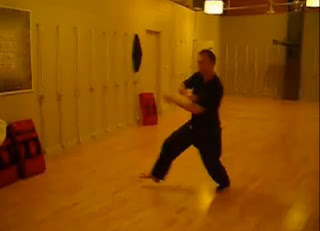King of cool: the side thrust kick

Introduction Following on from my article on refining the front snap kick , here are some more kicking tips, this time in relation to the side thrust kick. The side thrust kick is possibly the second most useful kick in the civilian defence arsenal after the front kick (many people think it is the roundhouse kick, but I disagree - more on that another time). And apart from any usefulness inherent in the side thrust kick, I think there's another, far more important , reason to learn and practice it: it's heaps of fun ! And done properly it can look pretty cool. Just take a look at the adjacent picture of Bruce Lee and tell me it isn't cool! I spent many an afternoon as a teenager trying to get that signature side thrust kick position just right. But, try as I might, I simply couldn't come close to mastering the hardest part - holding your leg in place! I wanted to able to do what Bruce Lee did in "Enter the Dragon". Remember when O'Hara come...

